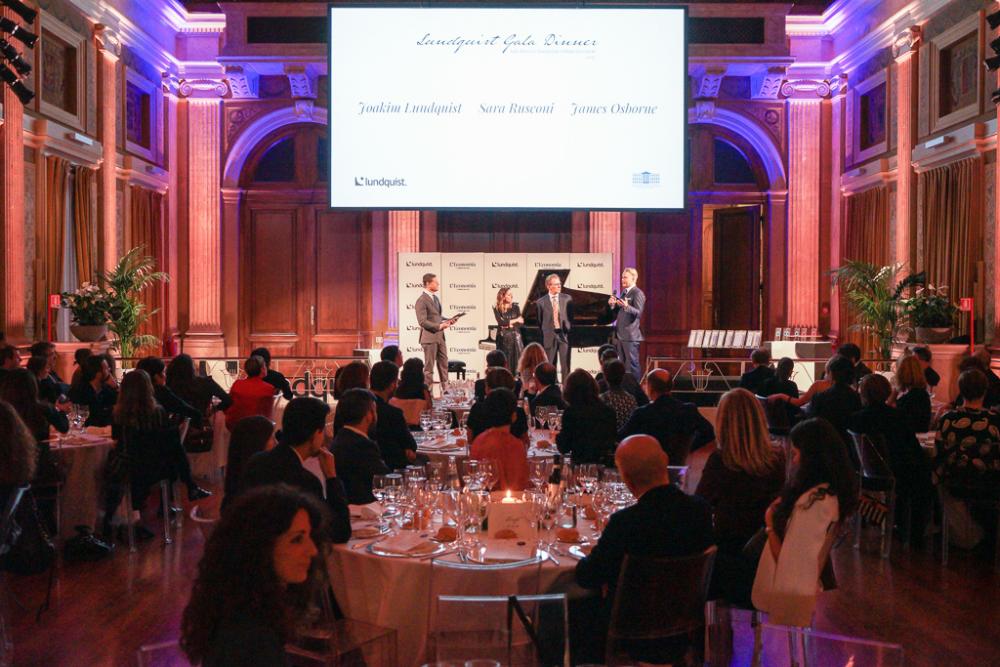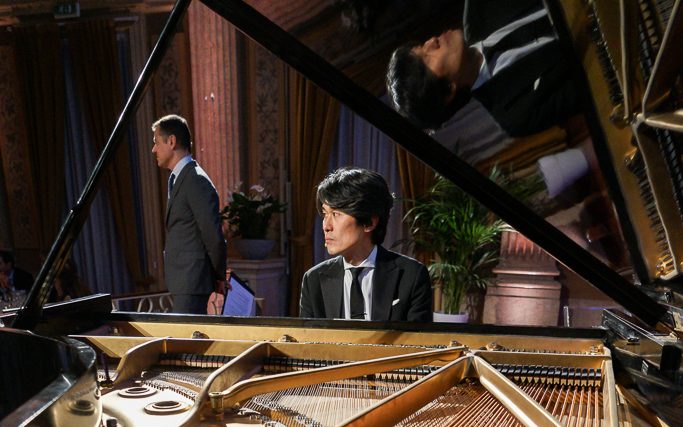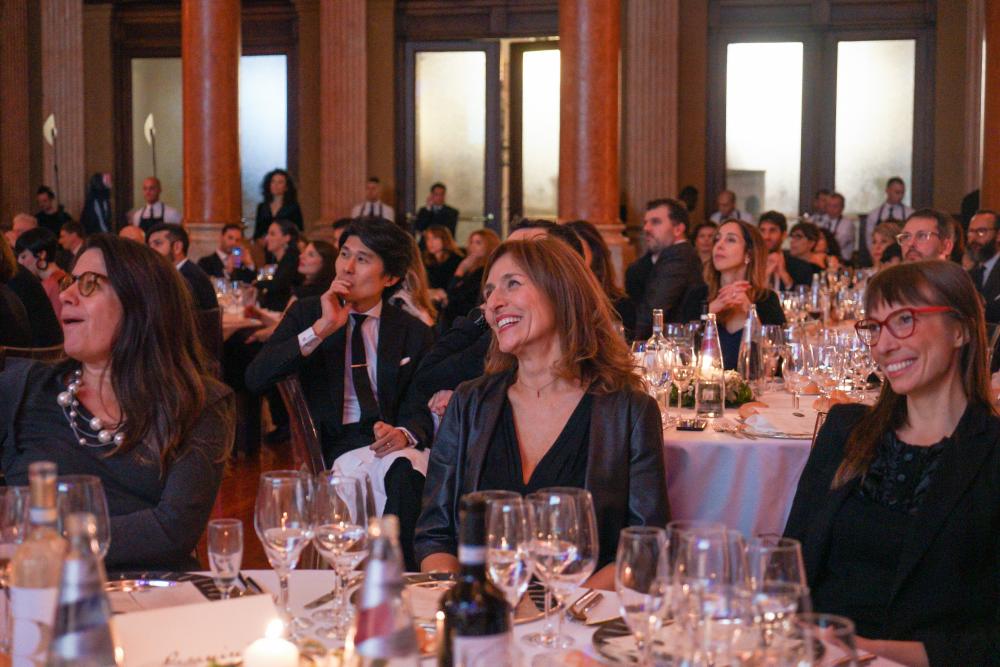At The ‘Champions League’ Of Communicators In Milan
Back in late 2018 when I took a plane to Italy’s fashion capital, Milan, little did I realise that an event I attended among a host of top listed on the Borsa Italiana and some unquoted companies would prove key to a story I penned on an advertising debacle that one major Italian fashion house had unwittingly caused in China.
This has been around Dolce & Gabbana (D&G) running an advertisement campaign for the market there showing Chinese models eating spaghetti with chopsticks. The backlash it caused led to D&G merchandise being removed from stores and window fronts. It was tantamount to the Italian group having its reputation in rags.
That event, hosted by Lundquist communications agency, was held at a prestigious club, Società del Giardino (www.societadelgiardino.it), founded in 1783 by a group of Milanese citizens, who originally gathered in outdoor venues to play bowls. This gentleman’s club has seen the likes of kings, princes, prime ministers and Nobel prize winners amongst others within its walls.
Lundquist Gala & Awards
Fast forward to 2019 and one of the city’s oldest institutions, Istituto dei Ciechi di Milano (Institute of the Blind), was chosen to host their gala dinner and awards. This venue in via Vivaio, which dates from 1840, has a number of spaces that can be hired out including the Barozzi room on the ground floor with a capacity of 210 seats and a stage.
As a special bonus on the night acclaimed Japanese pianist Takahiro Yoshikawa entertained guests with pieces by Liszt and Verdi. Visitors on another occasion can see the Louis Braille Museum inside its premises and the institute’s artistic heritage amongst a collection with more than 200 portraits of benefactors.
Dialogue in the Dark (Dialogo nel Buio) tours can also be booked. As one of one of the oldest and well-established ‘Dialogues’ around the globe and part of the Italian pavilion on the EXPO world fair in 2015, it offers a variety of tailor-made and public events - including aperitif in the dark, tasting in the dark, theatre, workshops for school classes as well as businesses and organisations.
The institute’s artistic heritage is also part of the collection comprising large paintings (with more than 200 portraits of benefactors), sculptures and musical instruments from bequests and donations made in favour of the Institute since it was established in 1840.
The museum is accessible to blind people who can book guided tours with experts from the Institute. The purpose of the museum is to showcase its history and the many functions carried out in the context of the Ambrosian network of educational and beneficial institutions which represent a unique case in both Italy and Europe.
ESG & Sustainability
So how are top European companies are facing the current tsunami of interest in Environmental Social Governance (ESG) and sustainability and how much they are able to combine their talk with actually executing on it?
There has certainly been a plethora of work, research and pronouncements in the space over recent years. One might even ask are there precise and one-size-fits-all definitions.
At what could be described as the ‘Champions League’ of Communicators in Milan this December more was learned about how leading corporates in the space are performing - who’s fit and who’s not, or at least have far more to do. Some are paving the way as “The Narrators”, whilst others are confined for now to “the bench” - to use a footballing term - or categorised as “The Sleepers”.
New Research
The so-called .future research (pronounced “dot-future”) from Lundquist, specialists in corporate communications and sustainability, has looked in a new whitepaper at how Europe’s top 50 companies are positioning themselves in this landscape and how much they are actually able to combine their talk with “the walk”.
In essence they have extended their horizons with this new research to take a look for the first time at how European companies are interpreting the challenge of sustainability communications.
“The whole ESG piece is very interesting at the moment given the very rapid change in the interest of financial markets, which requires a certain kind of response from all companies,” noted James Osborne, Lundquist’s head of Sustainability.
For this latest edition, 49 European companies that are members of the STOXX Europe 50 index were evaluated across Europe, examining the content of the entire corporate website, social media channels and related digital properties (magazines, mini-sites, etc.).
The research extends on and takes the best from a decade developing the CSR Online Awards that launched over a decade ago and takes a new, future-oriented perspective built around real stakeholder expectations. Credible and concrete stories about sustainability are looked for and examined.
When the first edition of the Lundquist CSR Online Awards was launched in 2007 the firm wanted to explore how to talk about corporate sustainability in new digital channels. They felt there was a need to break with a “report-driven” approach that tended to churn out static, technical content and ignore the needs of the digital user.
Today, that mission is as “urgent as ever” according to the authors of the Lundquist study, driven by surging interest in sustainability and an expectation that business should articulate how it is contributing to our collective future challenges.
Key questions are how are they now responding to this rapid increase in attention about their social and environmental impacts and to the need to explain their role in the current challenges of sustainable development?
The Context
In many ways, Europe is the global centre of corporate sustainability and ESG investing and much of the money flowing into ESG funds is in Europe, driven by the approach of various public sector bodies. So the context is interesting.
Recent research shows that 82% of investors globally take ESG factors into consideration in their investment decisions according to a survey of 652 investment professionals globally by Amir Amel-Zadeh (Said Business School, Oxford University) and George Serafeim (Harvard Business School) published in 2018.
Add to that 45% of global asset owners are actively aligning their investments with the Sustainable Development Goals according to a study of 118 large global asset owners by Morgan Stanley Institute for Sustainable Investing and Morgan Stanley Investment Management: Sustainable Signals, Asset Owners Embrace Sustainability (June 2018).
Key Findings: From The ‘Narrators’ to ‘Sleepers’
The latest .future analysis indicates that best companies in Europe are managing to connect communications to the substance of their impacts of their business, suggesting according to Osborne that: “Companies are working hard not only to be relevant and engaging, but to make sure communication is backed up by the kind of robust evidence that users clamour for.”
In terms of company standings, the research from Lundquist sought not to stress “rankings” in absolute terms. In fact they have not published scores in their 24-page white paper - but rather positioning.
Nine of the 49 companies considered in this study qualify as “Narrators” for this reason, led by oil companies BP and Eni, consumer groups Nestlé and Unilever as well as healthcare firms Bayer and Roche. The authors of the whitepaper pointed out: “It’s encouraging to see this mix of sectors…not only energy but also more consumer-facing names.”
The best companies - are to be found amongst the “Narrators”. Osborne said: “They exhibit a good balance between what they say and how they say it.”
Almost all of them strike a balance between “Substance” (45 points out of 100) and “Distinctiveness” (55 out of 100), between them the two pillars that have been analysed in the .future research. Companies rated ‘Gold’ class, were those entities who scored at least 60% of maximum in both pillars. Companies scoring at least 50% of maximum in both pillars - but not qualifying as Gold - were rated ‘Silver’.
Top of The Class: ‘The Narrators’
• Bayer (Gold)
• Eni (Gold)
• Nestlé (Gold)
• Unilever (Gold)
• BASF (Silver)
• BP (Silver)
• Deutsche Telekom (Silver)
• National Grid (Silver)
• Roche (Silver)
Bottom Of The Class: ‘The Sleepers’
Bottom of the class, if you like, are those companies with “inadequate ESG information” available online. This does not necessarily mean they do not have the information buried away somewhere. The Lundquist research categorises them as “Sleepers”. There are seven: ASML Holding, Lloyds Banking Group, LVMH, Prudential, Rio Tinto, Sanofi and Safran.
Top Italian Corporates
Within the Italian Top 100 .future results there are 46 companies deemed to be among “The Sleepers”. It includes Ferrari , Juventus FC, Mediaset, and two fashion houses - Salvatore Ferragamo and Yoox Net-Porter. While one fashion house, Moncler (rated Bronze class) performed well, generally fashion houses have been noted in recent annual analyses to have generally underperformed.
Explaining Osborne ventured by saying: “I think it is fair to say, based on various research we have done over the years, that many consumer brands prefer to focus their digital communications on the brand itself and the product/service. The corporation behind the brand tends to be less of a priority. And, that is reflected in the visibility given to all kinds of corporate information - sustainability among them.”
He added: “One could see Prada and Moncler as companies that are leading the way in terms of bringing the corporate out of the “shadows” and being more open and clear about how the business is run.”
Social Media Use
Finally, on the social media front and engaging with stakeholders, industrial gas company Linde scored top spot for best use of Facebook, while best use of Twitter was clinched by Unilever. In the latter’s case this was because it generates so much more engagement on social and environmental themes than on other topics. Roll on COP 26 (Conference of Parties) this coming November in Glasgow.
About the author: Roger is a freelance writer based in London and has contributed to Forbes in Europe, as well as The Guardian and The Independent. For a number of years he worked at the FT as a staff writer in London. He has been awarded a State Street Institutional (UK) press prize for covering the regulatory landscape in financial markets. Previously he worked as an editor at the London Stock Exchange within the Regulatory News Service (RNS).
Date published: 8 December 2019.














